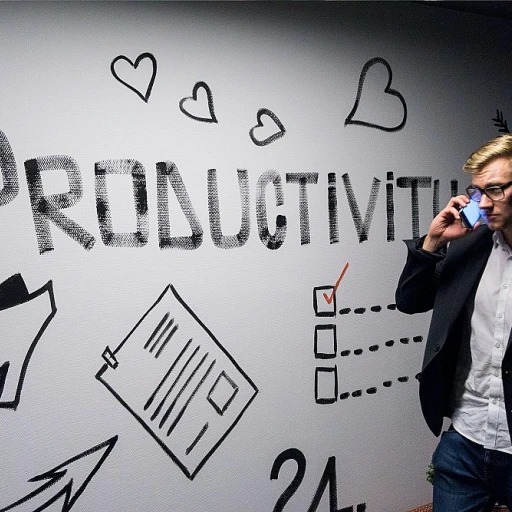
Understanding the Need for Standardized Interviews
Recognizing the Importance of a Structured Approach
The hiring process is a crucial component of recruitment, determining the success of acquiring the right talent. However, without a structured process, it can become inconsistent and prone to bias. A common challenge in traditional hiring methods comes from unstructured interviews, which often lack a clear format and specific questions, leading to subjective hiring decisions.
Moving towards structured interviews can significantly enhance the candidate experience and improve hiring outcomes. By standardizing the interview process, hiring managers can ensure that all candidates are evaluated fairly based on predefined criteria. Standardized interviews focus on asking the same set of interview questions, allowing for an objective comparison of candidates' skills and experiences.
This approach not only aligns with best practices in recruitment but also helps hiring teams make informed decisions by minimizing interviewer bias. For more insights into effective interview processes, you might explore what to expect in a teacher aide interview.
Key Elements of a Standardized Interview Process
Establishing a Consistent Framework for Interviews
Standardizing interviews begins with developing a reliable framework that guides the entire hiring process. To achieve uniformity, organizations must adopt a structured interview format that integrates core elements, ensuring the process is fair and comprehensive.- Develop Clear Job Requirements: Before crafting questions, it's essential to define the specific skills and competencies required for the job. This step not only ensures alignment with organizational goals but also informs the development of targeted, structured questions.
- Crafting Structured Interview Questions: Standardized interviews revolve around pre-determined questions tailored to elicit relevant information about candidates' qualifications. These questions should remain consistent across all interviews for a given role, allowing for an equitable assessment of each candidate.
- Consistent Interviewer Training: Interviewers must be well-prepared to conduct consistent interviews. Training programs that focus on structured interviewing techniques and best practices can help reduce interviewer bias and enhance the reliability of hiring decisions.
- Utilizing Rating Scales: Implementing standardized rating scales is crucial to objectively evaluate candidate responses. A systematic rating system enables hiring managers to compare the suitability of candidates objectively, ensuring talent acquisition remains focused on actual job performance indicators.
- Maintaining Candidate Experience: Even within a structured framework, it's important to consider how candidates perceive the interview process. Providing candidates with clear expectations and a transparent view of the recruitment process enhances their experience and reflects the organization’s commitment to fairness and respect.
Benefits of Standardizing Interviews
Advantages of Implementing Structured Interview Techniques
The journey towards establishing a cohesive hiring process can indeed be a transformative experience for organizations. As recruiters refine their interview techniques, standardizing interviews emerges as a pivotal best practice. Here’s how adopting a structured interview process can be advantageous:- Enhanced Consistency: Structured interviews come equipped with a format that aligns with job requirements. This ensures interviewers evaluate each candidate fairly, minimizing the bias that accompanies unstructured interviews. By focusing on standardized interview questions, hiring teams can ensure that every candidate undergoes an identical assessment process, promoting fair hiring decisions.
- Improved Candidate Evaluation: A well-defined interview process allows interviewers to concentrate on evaluating skills pertinent to the role. By adhering to standardized questions, they can more accurately gauge a candidate’s qualifications and potential. This prevents interviewers from veering off course and helps maintain alignment with the recruitment goals.
- Time and Efficiency Gains: Standardizing the interview process can streamline recruitment, ultimately saving precious time. Hiring managers benefit from a strategic approach that reduces repetitive tasks and maximizes productivity. The structured format enables teams to efficiently compare candidates and make informed decisions swiftly.
- Enhanced Candidate Experience: Candidates appreciate transparency and fairness. By implementing structured interviews, organizations can ensure a level playing field, enhancing the overall candidate experience. Structured interviewing demonstrates professionalism and helps establish a strong employer brand.
- Data-Driven Insights: A structured process allows for the collection of consistent data across multiple candidates. Organizations can leverage this information to fine-tune their hiring strategies, learning from each recruitment cycle to improve future interviewing practices.
Challenges in Implementing Standardized Interviews
Navigating Hurdles in Implementing Consistency
Implementing standardized interviews can undoubtedly enhance the recruitment process, but it is not without its challenges. While structured interviews offer a more fair and consistent evaluation method, the path to full adoption requires navigating several hurdles. The initial resistance to change can be significant. Hiring managers and interviewers accustomed to the flexibility of unstructured interviews may need convincing of the structured interview's benefits, such as reducing bias and improving candidate experience. Convincing them to shift towards a structured interview process can be difficult, often requiring time and training. Another challenge is developing the right set of standardized questions that align with job requirements. Crafting questions that elicit the necessary information about a candidate's skills and talents, while remaining relevant across various roles, demands a great amount of thought and effort. This requires input from the entire hiring team to ensure these questions effectively assess the best candidate fit. Moreover, adhering strictly to standardized formats could stifle spontaneous discussions that might offer deeper insights into a candidate’s problem-solving skills or potential cultural fit within the organization. Logistical challenges also arise when implementing changes to the interview process. Centralizing the process across different departments and ensuring all interviewers are trained in best practices for conducting structured interviews can be resource-intensive. Additionally, integrating technology and tools to facilitate standardized interviews can encounter obstacles, particularly regarding the cost and complexity of new systems. However, many organizations have found success by leveraging advanced software solutions that streamline the recruitment process, as previously discussed. Despite these challenges, the rewards of implementing standardized interviews often outweigh the difficulties, leading to more consistent hiring decisions and an overall improvement in talent acquisition. Each step towards standardization requires commitment and an openness to evolution from both interviewers and the hiring managers.Tools and Technologies for Interview Standardization
Empowering Interview Standardization with Essential Tools
To successfully implement a standardized interview process, leveraging the right tools and technologies is paramount. These resources aim to enhance the candidate experience, reduce bias, and streamline recruitment. Structured Interview Platforms Modern interview platforms offer the structured interview format, enabling hiring teams to maintain consistency across the board. These platforms support the standardized development of interview questions tailored to the specific job requirements, ensuring each candidate is assessed uniformly.- Interview Tools: Tools designed for structured interviews allow hiring managers to create and store templates, craft detailed questions, and track interviewer feedback. They also aid in assessing specific skills essential for the role.
- Candidate Management Systems: Comprehensive candidate management systems integrate seamlessly with interview tools, enhancing the recruitment process' transparency and efficiency. They help track candidates' progress and interviewer notes, facilitating unbiased hiring decisions.
- Bias Detection: AI tools analyze interview data to identify potential bias in the structured interview process, offering insights to hiring managers for creating a more equitable assessment.
- Predictive Analytics: Machine Learning algorithms assess historical data from previous candidates, predicting job success rates and guiding interviewers in making evidence-based hiring decisions.
- Feedback Systems: Comprehensive feedback systems collect data from interviewers and candidates about the interview experience. This can help adjust the interview format to better meet job requirements and enhance the candidate experience.
- Analytic Dashboards: These dashboards offer real-time insights into the hiring process, helping hiring managers track key performance indicators such as time-to-hire and candidate satisfaction.
Case Studies: Success Stories in Interview Standardization
Success Stories in Interview Standardization: Real-World Transformations
Implementing a standardized interview process can transform how organizations handle recruitment, significantly enhancing both the candidate experience and the quality of hiring decisions. Let’s explore some real-world examples where standardizing interviews made a remarkable difference.- Google's Structured Approach: As a pioneer in structured interviews, Google adopted a systematic interview process that prioritizes objective assessments over intuition-based judgments. They introduced structured interviews to reduce interviewer bias and improve the consistency of the hiring process. This change allowed their hiring team to focus on core job requirements and consistently evaluate candidates' skills and potential. By standardizing interviews, Google has been able to maintain a balance between candidate experience and talent acquisition, successfully reducing time-to-hire and improving hiring outcomes.
- A Global E-commerce Company: A major e-commerce player realized that their unstructured interviews were leading to inconsistent hiring decisions and a poor candidate experience. They switched to a structured interview format to standardize the interview questions and align them with job requirements. This transformation resulted in quicker recruitment processes and better-fit hires. Moreover, hiring managers reported a significant decrease in bias, making structured interviews a best practice within the organization.
- The Public Sector’s Leap: Even in the public sector, where hiring decisions can be heavily scrutinized, standardized interviews have proven beneficial. A government department shifted from unstructured interviews to a more consistent interview format, ensuring all candidates were evaluated against the same criteria. This process not only streamlined recruitment but also enhanced transparency and fairness, ultimately leading to a higher quality of talent acquisition.












